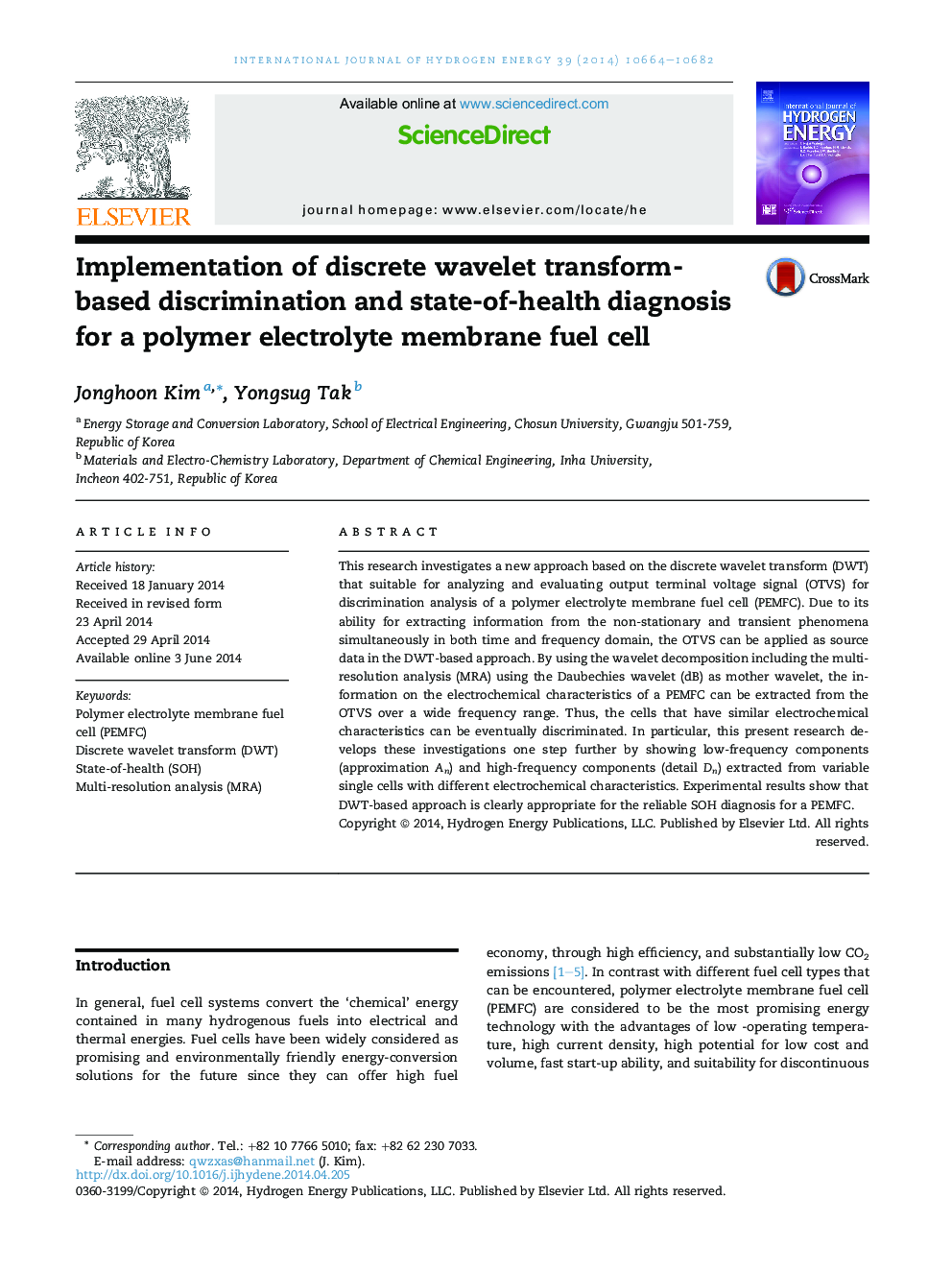| Article ID | Journal | Published Year | Pages | File Type |
|---|---|---|---|---|
| 1276192 | International Journal of Hydrogen Energy | 2014 | 19 Pages |
•The DWT is useful for analyzing signal with non-stationary and transient phenomena.•The output terminal voltage signal (OTVS) of a PEMFC is used as original signal.•The DWT-based multi-resolution analysis (MRA) with Daubechies dB3 wavelet is used.•An outstanding discrimination result among variable single cells is provided.•The proposed approach shows the clearness for the reliable SOH diagnosis of a PEMFC.
This research investigates a new approach based on the discrete wavelet transform (DWT) that suitable for analyzing and evaluating output terminal voltage signal (OTVS) for discrimination analysis of a polymer electrolyte membrane fuel cell (PEMFC). Due to its ability for extracting information from the non-stationary and transient phenomena simultaneously in both time and frequency domain, the OTVS can be applied as source data in the DWT-based approach. By using the wavelet decomposition including the multi-resolution analysis (MRA) using the Daubechies wavelet (dB) as mother wavelet, the information on the electrochemical characteristics of a PEMFC can be extracted from the OTVS over a wide frequency range. Thus, the cells that have similar electrochemical characteristics can be eventually discriminated. In particular, this present research develops these investigations one step further by showing low-frequency components (approximation An) and high-frequency components (detail Dn) extracted from variable single cells with different electrochemical characteristics. Experimental results show that DWT-based approach is clearly appropriate for the reliable SOH diagnosis for a PEMFC.
